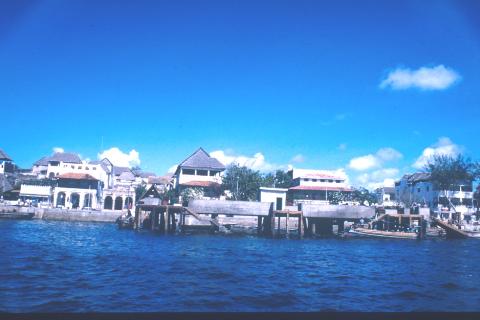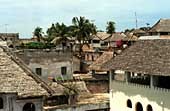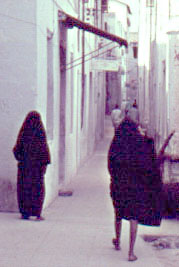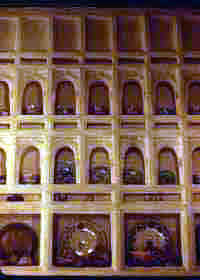To next page
Abu al-Mahasin (1441) (al-Manhal al-safi wa'l-mustawfi ba'd al-wafi) lived in Cairo.
------------------------------
Abu al Mahasin is the only medieval writter to write about Lamu town. For that reason we add some pictures of this historic town

M Guillain; Documents sur l'histoire la geographie...
Marcel Devic: Le Pays des Zendjs
It is a series of biographies which got never published.
He cites a passage from a lost work of al-Maqrizi concerning a qadi of Lamu, a town in the land of Zanj on the sea of the Berbers, some twenty marhala from Mogadishu.
Now this is what Maqrizi says of the Qadi: he came to Mecca while I was there at the end of A.H. 839(A.D.1441). I realized that he was a man of great erudition in the law according to the Shafi'i rite. The Qadi told us that monkeys have become the rulers of Mombassa since about A.H. 800 (A.D. 1402), to such an extend that they disturb the people in their homes and markets. They even come to take the food from the dishes, attack men in their homes and take away what they can find. The master of the house chases the thieving monkey, and does not seas cajoling him until the animal, having eaten the food, gives back the dish or vessel. When the monkeys enter a house and find a women, they hold congress with her.
It is the custom for the king of Mogadishu to call the officers to his dominion to the palace at an arranged time. When they have all met, he opens a window below which they are. The officers immediately prostrate themselves, and , when they stand up again, they see the king who, from the place where he is above them, gives them his orders and regulates maters of state. One day when this ceremony was being carried out in the usual manner, when the officers stood up and looked towards the window, they saw a monkey in the king's place.
The monkey's divide into bands, each with his own chief, and march behind him in an orderly manner. The people have much to put up with.
Lamou is a town in the land of the Zendjs on the shore of the sea of Berbera, at about 20 days walk from the east of Maqdechou. It is now nearly covered by sand which is several arms high. The sea often throws pieces of gray Amber. It is always taken by the king. Once a piece weighing 1,200 ratls was found. There are very large banana trees. These are of different kinds, and some of them bear fruit a cubit long. From them is made a kind of honey which lasts for more then a year and also various preserves. That is what Maqrizi says, but at greater length.
Note: Abu al-Mahasin by his writing on Lamu gives evidence of the existence of old Lamu town. Today it is covered by a sand dune called Hedabu hill situated between Shela and present day Lamu. More evidence of old Lamu comes from the Pate chronicle and Archeology.
-------------------------------------------------------------------------------
In his:History of Egypt 1382-1469
Sultan Barsbai showed great interest in the report sent by the Amir of Mecca and the controller of Jedda in 1432 that a number of Chinese junks had arrived in Aden from the seaports of India. The captain of these Chinese vessels had requested permission from the controller of Jedda to allow the junks to sail into the Red Sea. The sultan granted the request and asked his officials to treat the visitors with honor.
Note : What we have here is the arrival of the fleets of Cheng Ho visiting East Africa


